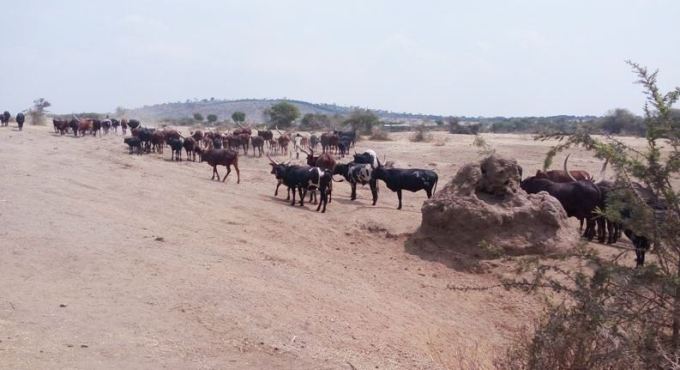
Cattle in Nyagatare district last year. Prolonged drought led to loss of thousands of livestock
A drought that ravaged large parts of Rwanda – especially in the east left huge chunks of the region not fit for cultivation, government has told the IMF.
Hundreds of families in the east have had to depend on government food aid when the crops the grew simply failed to see light of day. Whereas there has been no rain in the east, there was too much in north – also killing off crop yields. Government blames the destructive unpredictable weather pattern el-nino.
Government says the drought experienced for much of 2015 into 2016 caused crop failure of over 23,000 hectares and loss of some 2,000 cows.
In a policy statement submitted to the International Monetary Fund (IMF) on December 16 last year, finance minister Claver Gatete and Central Bank Governor John Rwangombwa, set out what is being and has to be done to reverse the situation.
“In response about 45,000 hectares have been irrigated and 13 valley dams have been constructed in Eastern Province to address the issue of lack of water especially for cattle,” say Gatete and Rwangombwa.
Every year, government and the IMF – through lengthy and complicated negotiations come up with the “Memorandum of Economic and Financial Policies”. The process starts with a government’s “letter of intent” – essentially outlining the economic policy it has on table.
Government has extended food support to households that faced acute food shortages, as well as distributed more than 160 tons of seeds for planting.
To cope with the changing climate, Rwanda Agriculture Board, is conducting research trials to produce crop varieties that give yield at relatively a short time compared to the already existing ones as they can help cope with drought.
The government plans to irrigate some 100,000 hectares of arable land by 2018, and to meet this target the ministry of agriculture is now bringing on board small scale irrigation scheme subsidy—whereby the government covers 50 per cent of the cost of irrigation facilities, to reverse the trend where government has covered the whole scheme.
To save livestock in these areas which is largely depends on livestock keeping, 28 makeshift dams were set up in Nyagatare and Kayonza to facilitate the water supply to the animals, to salvage 22,000 heads of cattle.


